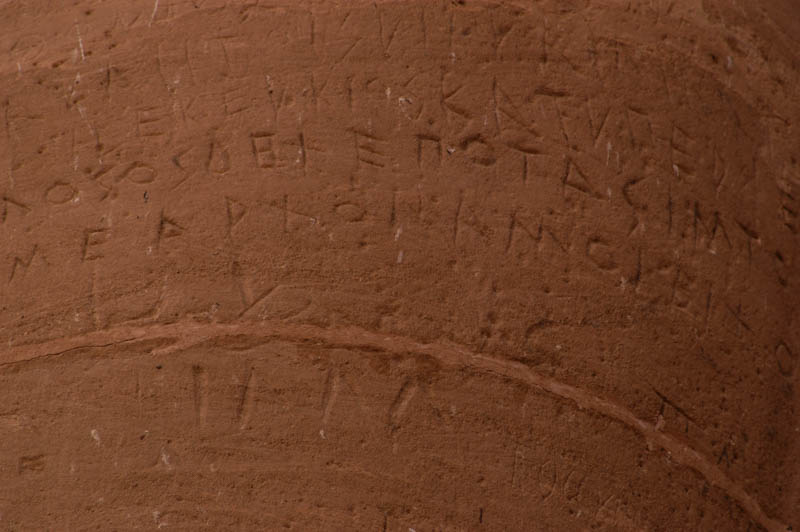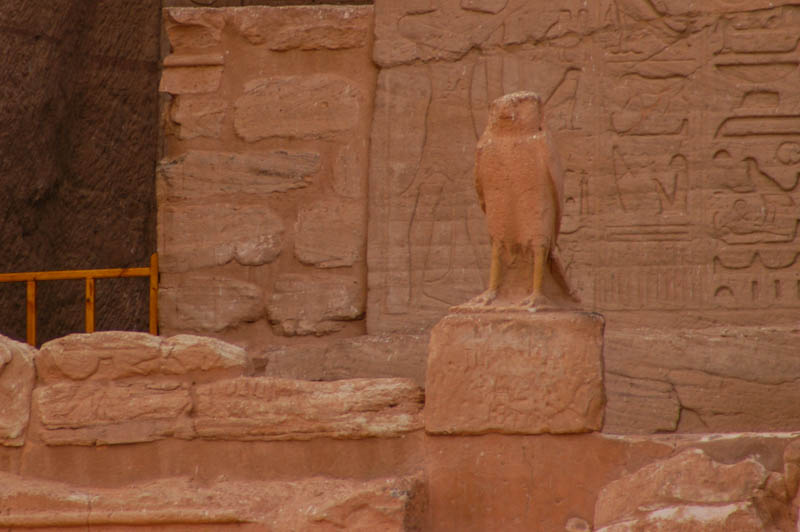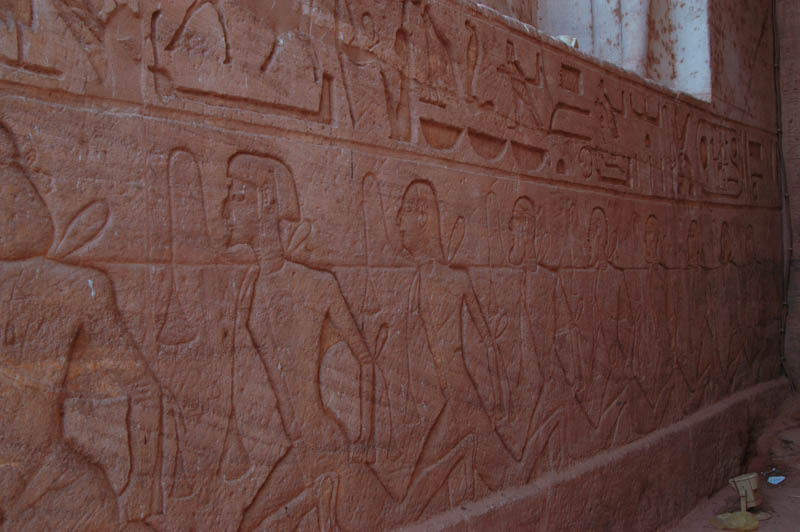
We spent about half an hour just sitting on the benches in front of the facade staring at the temple. It is hard to comprehend the size and scope of these colossi. What is really strange is that the feet of the statues are large and crude compared to the faces and arms — and they are completely covered in grafitti, an interesting sight in and of itself.

he temple is ostensibly dedicated to Re-Herakhte, Amun-Re, and Ptah (patron deities), but it is obvious that Ramesses, with his seated statues and mummiform columns inside, is clearly setting himself equal with them. Statues of Maat, Re-Herakhte, and members of Ramesses family are also shown (smaller, obviously, than the great Ramesses).

Once we’d stood in the courtyard in front of the facade for probably half an hour — thankfully other-tourist-less, since we were staying the night and walked up to the temple in the late afternoon, after the last plane had left to return to Aswan. Most visitors fly into Abu Simbel in the morning, see the temple for a few hours, and then fly out in the afternoon. Few people stay in town — the lack of hotels in town is evidence of that — and the huge nile cruisers tend to organize trips midday in order ot keep their schedules. If you can manage to fly into Aby Simbel in the afternoon and stay the night, it is well worth the time you can spend at the temple without any other people.
There were only a handful of people around the temple when we showed up, and so we wandered the corridors and chambers in almost eerie silence. It was as close to an awe-inspiring experience as I’ve had.

There is a small terrace at the front of the temple, lines with small statues of the gods and contaiing small chapels at either end — one dedicated ot the worship of Re, the other to Thoth. The entrance to the temple itself is between two of the enormous throned colossi, and there are carvings of cound captives on either side — Nubians on one side, Asiatics on the other.

Above the temple facade is a cornice lined with twenty-two baboons — there’re there, even iif I didn’t manage to get a picture! Baboons show up quite often in monuments, they represent Thoth, god of wisdom. Thoth is usually shown with the head of an Ibis, and is the god is responsible for writing and knowledge.